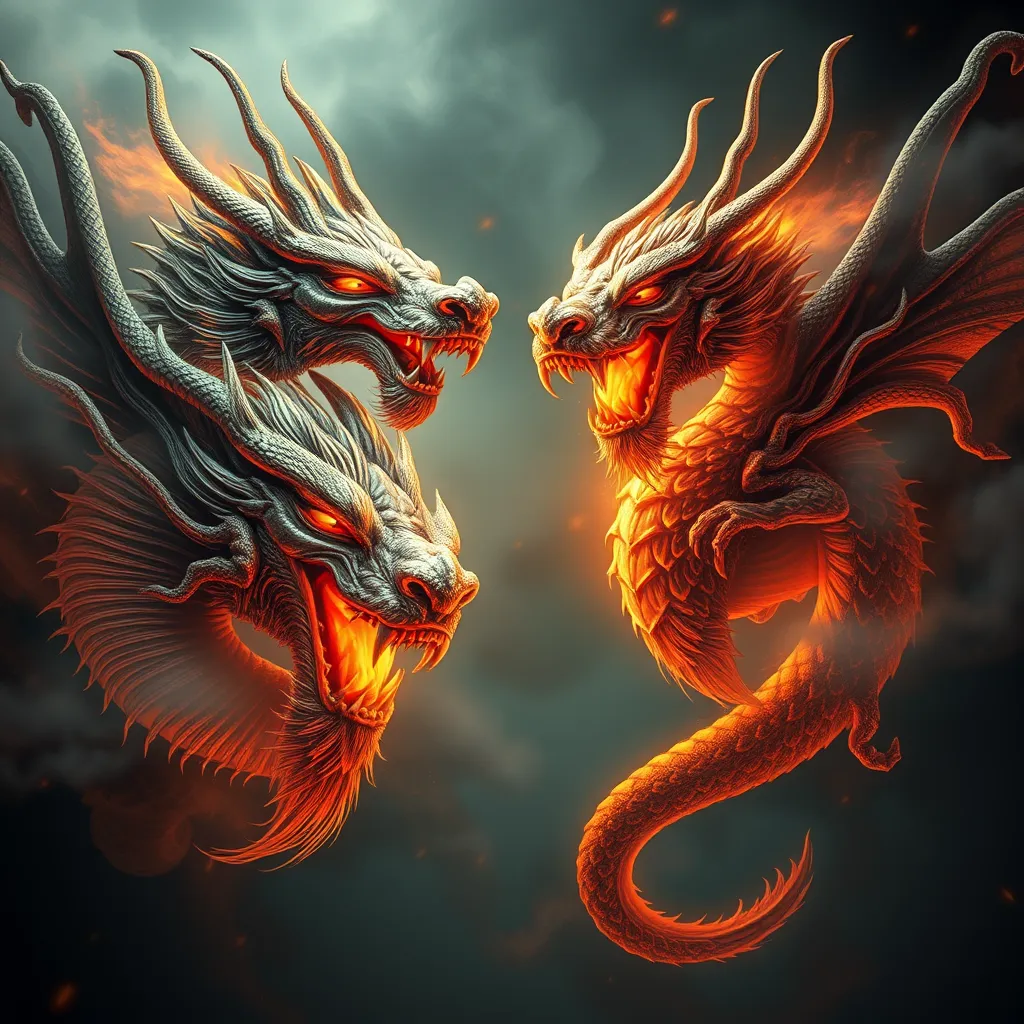The Chimera: A Timeless Myth for the Modern Age
I. Introduction to the Chimera
The Chimera, a creature from Greek mythology, is often depicted as a monstrous hybrid composed of different animals, typically featuring the body of a lion, the head of a goat protruding from its back, and a snake for a tail. This mythical beast has captivated imaginations for centuries, symbolizing the blending of various elements into a single entity.
Originating from the ancient stories of the Greeks, the Chimera embodies themes of chaos, fear, and the unknown. Its very nature as a hybrid creature raises questions about identity and existence, making it a relevant topic in contemporary discourse.
In modern culture, the Chimera has transcended its mythological roots, appearing in literature, art, and discussions surrounding genetic engineering. This enduring presence highlights its significance as a symbol of transformation and complexity in our lives today.
II. Historical Context of the Chimera
In Greek mythology, the Chimera was famously slain by the hero Bellerophon, who rode the winged horse Pegasus. This narrative reflects the struggle between humanity and monstrous forces, a theme prevalent in many mythological tales.
Throughout history, the Chimera has been depicted in various artistic forms:
- Ancient pottery and frescoes, showcasing its fearsome appearance.
- Renaissance paintings that often interpreted the Chimera through the lens of humanism.
- Modern sculptures and installations that explore its hybrid nature.
The evolution of the Chimera in various cultures reveals its adaptability and the universal themes it represents, from chaos to the merging of different identities.
III. Symbolism and Themes of the Chimera
The Chimera symbolizes hybridization, a concept that resonates deeply in today’s world. This hybrid nature reflects:
- The merging of cultures in a globalized society.
- The blending of different identities in contemporary discourse.
Additionally, the Chimera serves as a representation of human anxieties. It embodies fear and chaos, often associated with the unknown aspects of life, such as:
- Technological advancements.
- Environmental changes.
- Societal shifts.
Furthermore, the Chimera acts as a metaphor for the ongoing struggle between nature and civilization, symbolizing the conflicts that arise when human progress collides with the natural world.
IV. The Chimera in Modern Literature and Media
In contemporary literature and film, the Chimera appears in various forms, often reinterpreted as a character archetype that embodies the themes of complexity and duality. Notable examples include:
- The Chimera in fantasy novels, where characters often grapple with their hybrid identities.
- Films that feature monstrous hybrids, exploring the consequences of genetic manipulation.
These modern adaptations frequently analyze the implications of the Chimera’s symbolism, such as identity crises, societal acceptance, and the moral dilemmas associated with scientific advancements.
V. Scientific and Technological Parallels
As science progresses, the concept of the Chimera finds relevance in discussions of genetic engineering and bioethics. The creation of hybrid organisms, such as:
- Genetically modified organisms (GMOs).
- Chimeric organisms in research.
This raises profound questions about identity and the essence of life. The Chimera serves as a metaphorical lens through which we can examine the ethical implications of scientific innovation, pushing us to consider:
- The boundaries of nature.
- The definition of what it means to be natural.
Modern science reflects the mythological concept of the Chimera, challenging our perceptions of reality and identity.
VI. The Chimera in Art and Popular Culture
The artistic interpretations of the Chimera span various mediums, influencing visual arts significantly. Artists have drawn inspiration from its hybrid nature to explore themes of transformation, identity, and fear.
In popular culture, the Chimera has made its mark in:
- Fashion and design, where hybrid styles merge different cultural elements.
- Video games, where players often encounter Chimera-like creatures, reflecting the complexities of identity and morality.
These representations emphasize the continuing relevance of the Chimera in exploring modern societal themes.
VII. The Chimera as a Reflection of Modern Society
In our increasingly globalized world, the Chimera symbolizes hybrid identity and cultural amalgamation. It serves as a commentary on diversity and coexistence, prompting discussions about:
- The acceptance of multicultural identities.
- The blending of traditions and practices in a modern context.
Moreover, the Chimera represents resilience and adaptability, illustrating how individuals and societies can thrive amidst change and complexity, much like the creature itself.
VIII. Conclusion: The Enduring Legacy of the Chimera
The Chimera’s significance transcends time, from ancient myth to modern interpretations. Its themes of hybridization, fear, and the struggle for identity resonate profoundly in today’s world.
As we navigate a complex landscape marked by rapid change and uncertainty, the Chimera remains a powerful symbol of transformation and adaptability. It invites readers and thinkers alike to explore their own interpretations of this timeless myth, encouraging a deeper understanding of the multifaceted nature of existence.




